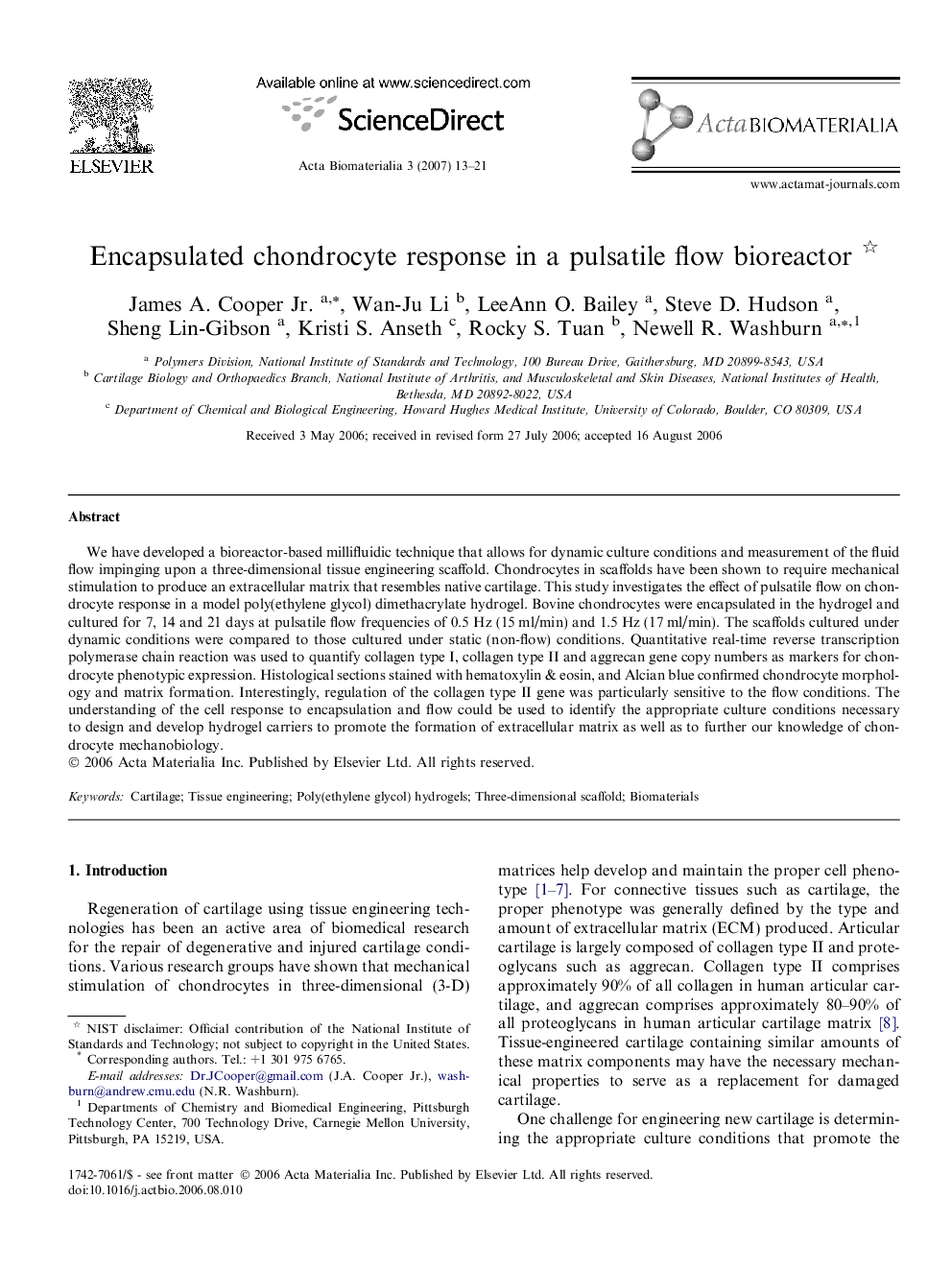| Article ID | Journal | Published Year | Pages | File Type |
|---|---|---|---|---|
| 2562 | Acta Biomaterialia | 2007 | 9 Pages |
We have developed a bioreactor-based millifluidic technique that allows for dynamic culture conditions and measurement of the fluid flow impinging upon a three-dimensional tissue engineering scaffold. Chondrocytes in scaffolds have been shown to require mechanical stimulation to produce an extracellular matrix that resembles native cartilage. This study investigates the effect of pulsatile flow on chondrocyte response in a model poly(ethylene glycol) dimethacrylate hydrogel. Bovine chondrocytes were encapsulated in the hydrogel and cultured for 7, 14 and 21 days at pulsatile flow frequencies of 0.5 Hz (15 ml/min) and 1.5 Hz (17 ml/min). The scaffolds cultured under dynamic conditions were compared to those cultured under static (non-flow) conditions. Quantitative real-time reverse transcription polymerase chain reaction was used to quantify collagen type I, collagen type II and aggrecan gene copy numbers as markers for chondrocyte phenotypic expression. Histological sections stained with hematoxylin & eosin, and Alcian blue confirmed chondrocyte morphology and matrix formation. Interestingly, regulation of the collagen type II gene was particularly sensitive to the flow conditions. The understanding of the cell response to encapsulation and flow could be used to identify the appropriate culture conditions necessary to design and develop hydrogel carriers to promote the formation of extracellular matrix as well as to further our knowledge of chondrocyte mechanobiology.
